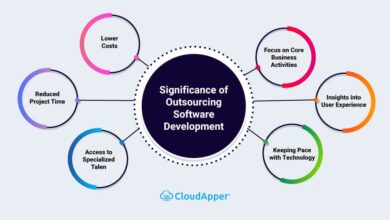Best Video Streaming App Development in 2024

In today’s digital age, video streaming has revolutionized the way we consume entertainment and information. From binge-watching favorite series to tuning into live events, video streaming apps have become an essential part of our daily lives. Businesses are increasingly recognizing the potential of this thriving industry, and the demand for video streaming app development is at an all-time high. Whether you’re an entrepreneur aiming to build the next Netflix or a business looking to offer live content, understanding the development process is crucial.
In this blog, we will walk you through the essential steps, technologies, and features involved in video streaming app development. From user experience to backend architecture, you’ll gain a comprehensive understanding of what it takes to create a seamless video streaming app.
The Booming Video Streaming Market
Before diving into the technical aspects of video streaming app development, it’s important to understand why investing in this industry is such a smart business move. According to a report by Grand View Research, the global video streaming market size was valued at USD 50.11 billion in 2020 and is expected to grow at a compound annual growth rate (CAGR) of 21.0% from 2021 to 2028.
This growth is fueled by the increasing consumption of online video content, with platforms like Netflix, Hulu, Amazon Prime, and YouTube leading the charge. Whether it’s on-demand video streaming or live streaming, consumers are more inclined towards instant access to high-quality video content across multiple devices. As a business owner, tapping into this expanding market can lead to substantial revenue and brand recognition.
Key Features of a Successful Video Streaming App
When it comes to video streaming app development, the key to success lies in incorporating the right set of features. Here are some must-have functionalities that will make your app stand out in the competitive streaming space:
1. User Registration and Profile Management
Your app should allow users to easily register, create profiles, and manage their preferences. Social media login options can simplify this process, reducing barriers to entry. The user profile will serve as the hub for managing subscriptions, watchlists, and personalization settings.
2. Content Search and Recommendations
A robust search function and personalized content recommendations are crucial for enhancing user experience. Using AI and machine learning, your app can track user behavior and preferences to suggest relevant content, which keeps users engaged and increases session time.
3. Multi-Device Support
In today’s multi-screen world, users expect the ability to switch seamlessly between devices. A modern video streaming app should work flawlessly on smartphones, tablets, smart TVs, and desktops. By developing a responsive and adaptive design, you’ll ensure a consistent user experience regardless of the device being used.
4. Video Quality and Playback Options
Offering adjustable video quality based on the user’s internet speed is another vital feature. Buffering can be a deal-breaker for many users, so incorporating adaptive bitrate streaming ensures smooth playback even under varying network conditions.
5. Monetization Models
Monetization is one of the key aspects of video streaming app development. There are various ways to generate revenue through your app, including:
- Subscription-based models (like Netflix or Disney+)
- Ad-based models (like YouTube)
- Pay-per-view (for one-time events or premium content)
Choose a model that aligns with your target audience and business goals.
Step-by-Step Guide to Developing a Video Streaming App
To build a successful app, it’s essential to follow a systematic approach. Here’s a step-by-step guide to video streaming app development that will help you navigate the process smoothly.
Step 1: Market Research and Defining Your Audience
Before diving into the technical aspects, conduct thorough market research to identify your target audience and analyze your competition. This will help you determine the type of content to offer, which features are a must-have, and how you can differentiate your app from existing platforms.
Step 2: Choosing the Right Technology Stack
The choice of technology stack plays a crucial role in determining the performance and scalability of your app. For video streaming app development, consider the following components:
- Frontend Technologies: React Native, Flutter, or Swift for iOS and Kotlin for Android development.
- Backend Technologies: Node.js, Ruby on Rails, or Django for a scalable backend.
- Database: MongoDB, PostgreSQL, or Firebase for data storage and retrieval.
- Cloud Services: Amazon Web Services (AWS) or Google Cloud for content storage and delivery.
- Content Delivery Network (CDN): A CDN ensures that your video content is delivered quickly to users across the globe. Popular options include Akamai and Cloudflare.
Step 3: Design and User Experience (UI/UX)
The design and user experience of your app can make or break its success. Ensure that your app’s interface is intuitive and visually appealing. Keep navigation simple and provide easy access to content. Dark modes and customizable interfaces are also trending among users, especially for apps designed for extended viewing periods.
Step 4: Building the Backend
Your backend infrastructure is the backbone of your video streaming app. It handles content storage, user management, and video playback. Make sure to implement scalable cloud storage solutions, especially if you’re planning to offer high-definition (HD) or 4K videos. Integrating a content delivery network (CDN) is also crucial to deliver video files quickly and efficiently across different geographic locations.
Step 5: Implementing Security Features
Security is a top concern when developing a video streaming app. Protect user data and content from unauthorized access by incorporating:
- SSL encryption
- DRM (Digital Rights Management) technology to prevent illegal downloads and piracy
- User authentication systems like two-factor authentication (2FA)
Step 6: Testing and Launch
Testing is a critical stage in video streaming app development. Before the official launch, ensure your app goes through thorough testing, including performance tests, security tests, and user experience evaluations. Once your app is fully optimized and bug-free, it’s time for the launch!
Post-Launch Support and Maintenance
The work doesn’t stop after the launch. Regular updates, bug fixes, and the addition of new features are essential to keeping your app competitive in the evolving market. Monitor user feedback and make necessary improvements to ensure a smooth and engaging experience.
The Future of Video Streaming Apps
As technology advances, new trends are shaping the future of video streaming. Here are some trends you should consider integrating into your video streaming app development strategy:
- AR/VR Streaming: Immersive experiences through augmented and virtual reality are gaining traction in the entertainment industry.
- AI-driven Personalization: AI can further enhance personalization, offering hyper-targeted content recommendations to users.
- 5G Technology: With the rise of 5G, users will experience ultra-fast streaming speeds and lower latency, opening the door to more interactive video content.
By staying ahead of these trends, you can ensure your app remains relevant and competitive in the years to come.
For more interesting blogs click here.



